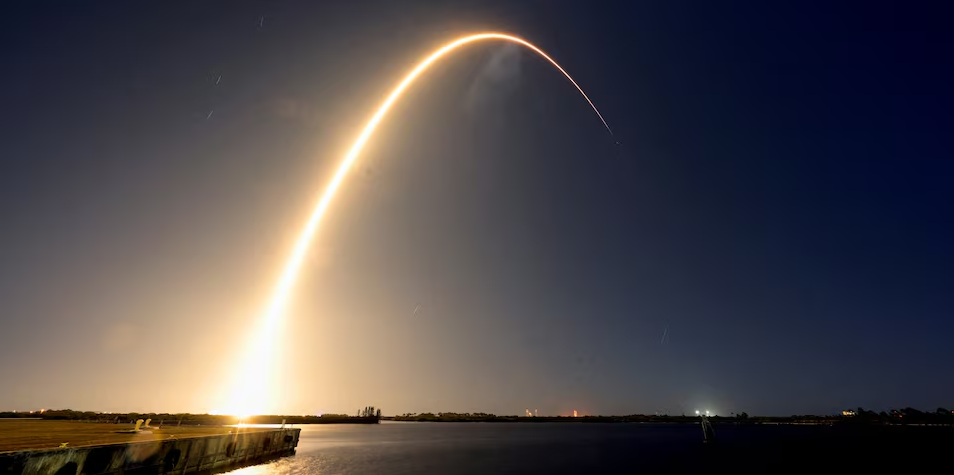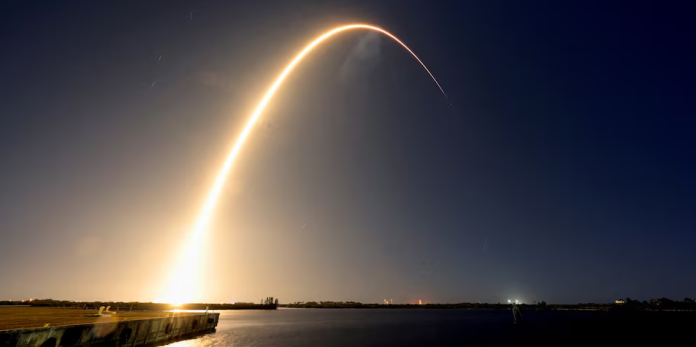Firefly Aerospace has officially joined the ranks of lunar pioneers with the successful landing of its Blue Ghost spacecraft on the Moon. The Texas-based company achieved this milestone on Sunday, marking a major step forward in the privatization of space exploration. This mission kicks off a two-week research operation as commercial space companies race to make their mark on the Moon.
A Milestone for Private Space Exploration
The Blue Ghost lander, about the size of a compact car, carried ten scientific instruments as it made a smooth landing at 3:35 AM ET (0835 GMT). It touched down near Mare Crisium, a vast lunar basin located on the Moon’s Earth-facing side.
Inside Firefly’s Austin, Texas headquarters, tension filled the air as engineers monitored the lander’s descent. The spacecraft gently approached the surface at just two miles per hour, ensuring a controlled touchdown. Moments later, Will Coogan, Firefly’s Chief Engineer, confirmed the spacecraft’s arrival with the simple but powerful words:
“We’re on the Moon.”
The room erupted in cheers, celebrating Firefly’s historic feat. The company is now the second private firm to land on the Moon, following Intuitive Machines’ Odysseus lander. However, unlike Odysseus—whose lopsided landing damaged many of its instruments—Firefly claims Blue Ghost is the first fully successful private soft landing.
A New Chapter in the Global Space Race
While five nations—the United States, China, India, Russia, and Japan—have previously achieved soft Moon landings, private companies are now stepping into the spotlight. The U.S. and China are competing to return astronauts to the lunar surface, with both nations pushing for ambitious crewed missions before 2030.
Firefly’s mission is part of NASA’s Commercial Lunar Payload Services (CLPS) program, a $101 million initiative aimed at fostering a competitive commercial space sector. The lander’s journey covered a total of 2.8 million miles, taking a circuitous route that involved multiple orbits before finally reaching the 238,000-mile distance to the Moon.
Blue Ghost launched atop a SpaceX Falcon 9 rocket from NASA’s Kennedy Space Center in Florida, a sign of the increasing collaboration between private space firms.
What’s Next for Blue Ghost?
The lander’s three solar panels will generate power for its onboard instruments for 14 days, gathering critical data before the harsh lunar night sets in, bringing temperatures as low as -280°F (-173°C).
Key scientific experiments include:
- Studying lunar soil composition
- Measuring subsurface temperatures
- Analyzing dust plumes created during landing
These experiments, conducted by Honeybee Robotics and NASA’s Langley Research Center, will provide valuable insights for future crewed Moon missions under NASA’s Artemis program.
The Bigger Picture

Firefly’s success is part of a larger trend—governments are increasingly looking to private companies to make space missions more cost-effective and frequent. Other countries are adopting this commercial space model, with India investing heavily in private space ventures and Europe funding multiple launch startups.
Speaking about the significance of Firefly’s success, Chris Culbert, head of NASA’s CLPS program, stated:
“We now have proof that lower-cost, faster-paced Moon missions are possible. We landed almost perfectly.”
This achievement comes amid shifting priorities in U.S. space policy. With ongoing debates about focusing on the Moon vs. Mars, NASA officials have reaffirmed that the Moon remains a key part of America’s long-term space strategy.
As Firefly Aerospace joins the growing list of companies capable of landing on the Moon, one thing is clear—the commercial space race is just getting started.



